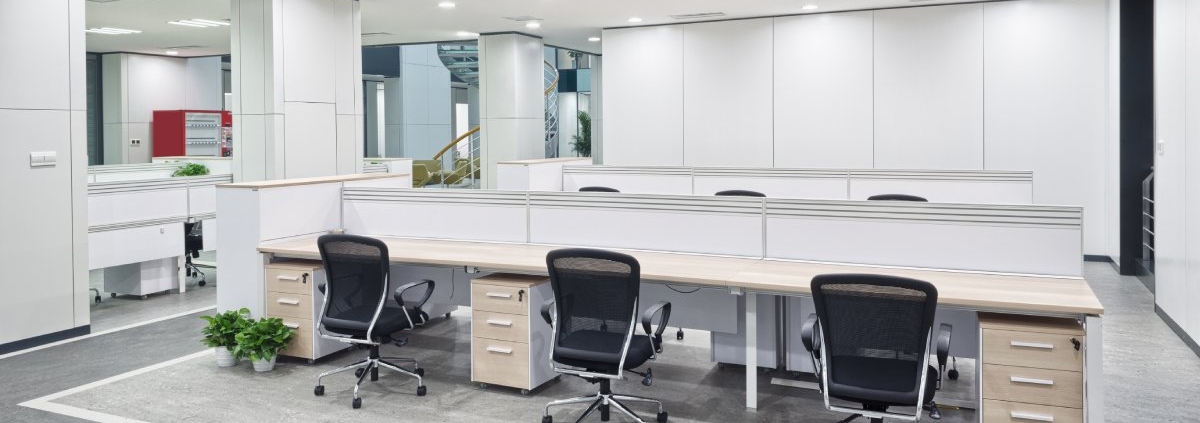7 Lighting Ideas That Help With Employee Productivity
The right lighting can positively impact mood, energy, and productivity, making it an essential element in any workplace. A well-lit office enhances employee performance and satisfaction. With that, let’s explore the best lighting ideas that help with employee productivity.
Natural Light for a Natural Boost
Exposure to natural light is one of the best ways to improve productivity. Sunlight helps regulate circadian rhythms, which control sleep-wake cycles.
Employees exposed to natural light often report higher energy levels and better focus throughout the day. By positioning desks near office windows, you can maximize your employees’ sunlight exposure and help boost their moods.
The Magic of Task Lighting
Another lighting idea that helps with productivity is task lighting. Task lighting provides focused illumination for specific work activities.
Desk lamps with adjustable arms allow employees to direct the light exactly where it’s needed. This reduces eye strain and fatigue, making detailed tasks easier to complete.
Ambient Lighting Sets the Mood
Ambient lighting creates a uniform light level throughout the workspace, setting the overall mood and tone of the office. Soft, diffused lighting reduces glare on computer screens and creates a more comfortable environment.
Consider using LED panels or overhead fixtures to achieve balanced lighting. Office furniture and design companies like Central Oregon Office Interiors can offer expert advice on how to set up your lighting for better productivity.
Color Temperature Matters
The color temperature of lighting affects concentration and alertness. Cooler temperatures (around 5000K) are ideal for tasks requiring high attention to detail.
Alternatively, warmer temperatures (around 3000K) create a relaxed atmosphere that is suitable for creative work. Ideally, you should try to incorporate a mix of both to cater to different types of tasks in the office.
Smart Lighting for Modern Workspaces
Smart lighting systems can automatically adjust light levels based on the time of day or level of activity within the office. These systems use sensors and controls to optimize lighting conditions, which ensures a consistent and productive work environment. They also contribute to energy savings by reducing unnecessary light usage.
Glare Reduction for Enhanced Comfort
Certain types of lighting can create a glare that causes discomfort and reduces productivity. You can use light diffusers, shades, or indirect lighting to minimize glare in the office.
You should also position computer screens perpendicular to windows to avoid reflections. Properly managing glare will create a more comfortable and productive workspace for your employees.
Office Layout and Lighting Integration
The layout of your office space plays an important role when it comes to lighting. For instance, open-plan offices benefit from a combination of natural, ambient, and task lighting.
Meanwhile, private offices might require more personalized lighting solutions based on individual preferences. Integrating proper lighting design with the overall office layout ensures optimal light distribution.
Effective lighting is essential for a productive work environment. Be sure to keep these tips in mind as you set up the lighting in your company’s office. And if you need assistance making lighting and design choices for your office, don’t hesitate to contact our team at Central Oregon Office Interiors.



